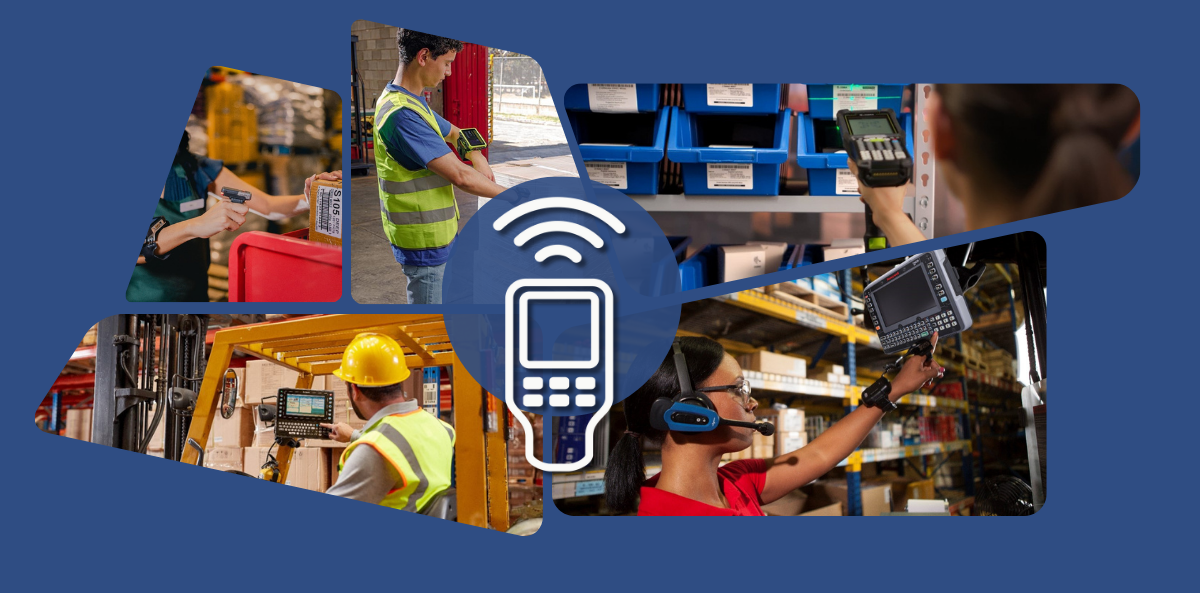
Data terminal – what is it and what is it used for? Data terminals for logistics and warehousing
A data terminal is a device commonly used in logistics, warehousing, retail, and production management. Terminals and data collectors improve efficiency during the inventory of fixed assets and goods in warehouses. They are used for managing orders and returns in the retail sector as well as for monitoring production. It’s worth being aware of the great benefits of this compact mobile computer. From this article, you will learn:
- How a data collector differs from a terminal
- What functions a data terminal offers
- Applications of terminals in logistics and warehousing
- Benefits of using data terminals
How does a data terminal differ from a data collector?
A data collector is a portable device with a built-in barcode reader, display, and keypad. It is designed to collect data by scanning codes, then saving them in memory and transferring them to the system. Although portable, data collectors usually communicate with the system via a docking station. Because they are used for inventorying, they are also called inventory devices.
Meanwhile, data terminals are more advanced devices operating on an OS (e.g., Android), which allows for additional apps and extended functionalities. They come standard with barcode and 2D code readers, and may also feature a built-in camera, photo module, or RFID reader. Scanned data can be transferred via WiFi or Bluetooth and updated in real-time. Some terminal models also have a built-in SIM card.
Data terminal and its functions
The basic functions of data terminals and collectors include:
- Reading barcodes and 2D codes
- Saving collected data in the device memory
- Processing and sending data to the system
Advanced capabilities of data terminals allow not only fast data collection and analysis. Thanks to a connection with a database, the operator can remotely:
- Verify whether incoming goods match documentation
- Receive or release goods from the warehouse
- Check prices
- Monitor product inventory
Data terminals in logistics and warehousing
Data terminals are most commonly used in logistics and warehousing due to how much they streamline and accelerate essential processes. Their applications include:
- Order picking
- Receiving goods into the warehouse
- Shipment tracking
- Shipment registration
- Warehouse inventory
- Handling returns
- Inventory control and management
- Goods dispatch
- Stock management
- Real-time logistics system updates.
These are just a few common applications. The devices perform well in both small warehouses and massive facilities with diverse assortments. Even in high-rack storage warehouses, data terminals are effective – you just need a device with a long-range scanner and the ability to read codes from various angles.
They are also used in industries like healthcare, retail, and field services such as repairs, installations, and technical support.
Benefits of using data terminals
Data terminals are now widely used in warehouses, production enterprises, retail, and field services. Their application brings many benefits, such as:
- Increased operational efficiency
- Reduced human error
- Faster customer service
- Lower storage and transportation costs
- Accelerated shipping processes
- More efficient return handling
- Full inventory control and management
- Time savings for employees
- Improved security
- Easy data management
- Fast, easy access to collected data
- Convenient data formats
- Exportability to various software programs
- Data safety
Despite these numerous benefits, data terminals are quite user-friendly. Modern models are lightweight, ergonomic, and come with screens that clearly display collected data.
Types of terminals – choose the right solution
Such precise support for logistics and warehousing is possible thanks to various types of data terminals. These include handheld, vehicle-mounted, mobile, and touchscreen terminals. They can also be categorized by scanner range or keyboard type. Most are suitable for harsh conditions, being resistant to drops, impacts, moisture, dust, and extreme temperatures.
Handheld data terminals

Handheld terminals are the most popular and universal on the market. Devices with touchscreens, durable casings that withstand 3-meter drops, wireless communication, and optional pistol grips offer great comfort. Their wide configuration options mean they can be tailored to almost any user requirement.

Vehicle-mounted terminals
Designed specifically for forklift use, vehicle-mounted terminals are fully professional solutions. These devices operate in extreme environments like warehouses, cold storage, and loading ramps. The housing provides IP66 dust and water resistance and sealed communication and power connectors. They are shock- and vibration-tested for forklift installation. Screen sizes range from 8” to 12”, with function keys and optional keyboards, making them ideal for software that displays large amounts of information. An integrated barcode scanner supports warehouse operations.


Examples:
- Honeywell Thor VM1A
- Zebra VC8300
Wearable scanners and data terminals
The key component of wearable solutions is the barcode scanner, worn on the finger (ring-style) or mounted on the back of the hand. Complementing this is the data terminal worn on the forearm. These solutions are ergonomically optimized – lightweight and compact, so operators feel no strain and can perform tasks effortlessly. Hands-free scanning allows both hands to be free to handle products, boxes, or perform other tasks.


Data terminals are powerful mobile devices. To choose the best solution for your company, contact our specialist!
